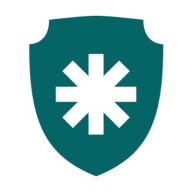
Senhasegura Session Management and ThreatLocker Elevation Control compete in session and privilege management. Senhasegura stands out for ease of use and customer service, whereas ThreatLocker has superior features that may appeal to specific buyers.
Features: Senhasegura Session Management offers seamless session monitoring, detailed logging, and real-time alerts enhancing security oversight. It ensures audits and compliance. ThreatLocker Elevation Control provides robust application whitelisting, precise privilege elevation, and minimizes vulnerabilities by restricting unauthorized application access.
Ease of Deployment and Customer Service: ThreatLocker Elevation Control has a cloud-based deployment model requiring minimal setup with responsive service. Senhasegura offers flexible deployment options, including on-premise, supported by dedicated support teams for smooth integration.
Pricing and ROI: Senhasegura Session Management is cost-effective, demonstrating high ROI through reduced incidents and efficient management. ThreatLocker Elevation Control, possibly more costly initially, promises ROI through reduced risk exposure and efficient privilege management.
Recording and storage of all remote sessions performed through the solution for later viewing.
The recording can be used to prove the change to a database, identify an improper action in a critical system, find the root cause of a problem, or meet audit, inspection or legal demands.
ThreatLocker Elevation Control [EOL] is a sophisticated security tool designed to manage application permissions effectively. It enhances control over user privileges, limiting the risk associated with unauthorized access to critical systems.
This tool is specifically crafted for IT environments seeking advanced privilege management. By offering detailed controls over application elevation, it significantly improves security posture without hindering productivity. Users find its granular permission settings and ease of integration particularly valuable, helping to seamlessly implement strict security protocols across enterprise networks. While it provides robust protection, some users have noted that initial configuration can be complex, indicating room for streamlining deployment processes.
What are the standout features of ThreatLocker Elevation Control [EOL]?In industries such as healthcare and finance, ThreatLocker Elevation Control [EOL] is implemented as a key component of cyber defense strategies. Its control over user permissions helps ensure compliance with strict regulatory requirements, making it a trusted choice for safeguarding sensitive data and maintaining operational integrity.
We monitor all Privileged Access Management (PAM) reviews to prevent fraudulent reviews and keep review quality high. We do not post reviews by company employees or direct competitors. We validate each review for authenticity via cross-reference with LinkedIn, and personal follow-up with the reviewer when necessary.